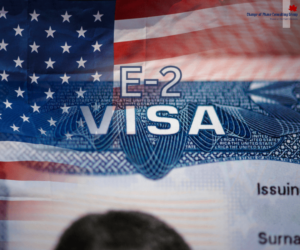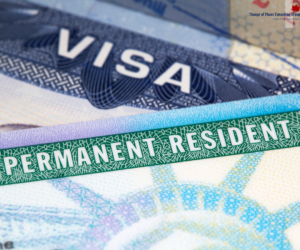Whether it’s the draw of a different way of life, the better weather, or the desire to live nearer to family, many people dream about retiring in the United States. The good news is that you can retire in the United States without sacrificing your citizenship or long-term connections to your home country. Despite the lack of a designated “retirement visa,” there are a number of options to settle in the United States and live out your golden years in peace.
We’ll go into great detail in this blog about the many retiree visa possibilities and what you need to know to apply while keeping your ties to your home country intact.
1. The B-2 Tourist Visa: The Most Common Choice for Retirees
The B-2 Tourist Visa is among the most popular and straightforward visa choices for retirees who want to remain in the United States. Many people use it as a means of staying in the United States for a long time, even though it’s not exclusively for retirees. This visa is normally valid for a maximum of six months per year and can be renewed in specific situations.
Eligibility Requirements:
- You have to demonstrate that you plan to leave the nation at the end of your visit.
- Show that you have the financial means to sustain yourself while in the United States, whether through personal savings, pension income, or other sources.
- You must demonstrate that you have no plans to work or conduct any business while in the United States.
Important Considerations:
- The B-2 visa does not give permanent residency because it is a non-immigrant visa.
- If you want to stay longer than the first six months, you will have to apply for a visa extension. Extensions are not assured, though.
- While on this visa, you are not permitted to work or take part in any activities that generate income.
How to Keep Your Home Country Ties:
- Make sure you have a home, bank account, or business in your home country. This will prove your intention to return once your visa expires.
- A key factor in obtaining a B-2 visa or extension is your ability to show that you’re not trying to live permanently in the U.S. so maintaining strong ties to your home country is vital.
2. The E-2 Treaty Investor Visa: A Pathway for Retirees with Investment Interests
The E-2 Treaty Investor Visa could be a fantastic choice if you are prepared to invest in a U.S. company and have the necessary funds. With this visa, people from nations with which the United States has a treaty of commerce and navigation can invest a significant sum of money in a firm in the United States and remain there for as long as the investment is active.
Eligibility Requirements:

- You must be a citizen of a treaty country (e.g., the U.K., Canada, Japan, and many others).
- You need to make a significant investment in a U.S.-based business. While the investment amount is not fixed, it should be substantial relative to the type of business and ensure its success.
- You must be coming to the U.S. to develop and direct the business, not as a passive investor.
How to Keep Your Home Country Ties:
- If an E-2 visa is a non-immigrant visa, you can live in the United States and still have connections to your home country. Giving up your citizenship or permanent residence in your nation of origin carries no obligations.
- You can still keep your ties to your home country, such as having family or property there, if you decide to engage in a firm that is very low-key or generates little income.
3. The EB-5 Immigrant Investor Visa: Permanent Residency Through Investment
For retirees who want to live in the US permanently, there is the EB-5 Immigrant Investor Program. The EB-5 visa offers a direct path to permanent residency (a Green Card), but it needs a higher investment than the E-2 visa (usually $1 million or $500,000 in a selected employment area).
Eligibility Requirements:
- You must invest at least $1 million in a U.S. business or $500,000 in a rural or high-unemployment area (known as a targeted employment area).
- Your investment must create at least 10 full-time jobs for U.S. workers.
How to Keep Your Home Country Ties:
- You can easily keep your citizenship in your original country even though the EB-5 visa grants permanent residency.
- If they have the funds to invest in the American economy while obtaining permanent residency, many retirees take this path. Since the United States does not require new immigrants to renounce their previous citizenship, they can maintain their original country and citizenship.
4. The Family-Sponsored Green Card: A Path for Retirees with U.S. Family Members

You might qualify for a family-sponsored Green Card if you have children or other close relatives who are citizens or permanent residents of the United States. One of the most popular routes for retirees to obtain permanent residency in the United States is through family-based immigration.
Eligibility Requirements:
- You must have a legitimate familial link and be sponsored by your child who is a U.S. citizen or permanent resident.
- To save you from becoming a public charge, your family member needs to fulfill certain income standards.
How to Keep Your Home Country Ties:
You can keep your original citizenship and have strong ties to your home country even though the family-sponsored Green Card grants permanent residency. This includes keeping assets, bank accounts, and, if desired, a business in your nation of origin.
5. The U.S. Social Security Benefits: Retirees Can Keep Their Benefits While Living in the U.S.
You may be wondering how your move to the United States will affect your Social Security payments if you now receive them from your native country or want to do so in the future. Thankfully, retirees who fulfill qualifying standards can continue to receive Social Security payments while residing in the United States.
How to Keep Your Home Country Ties:
- You can remain a citizen of your home country and live in the United States if you are currently receiving Social Security benefits. As long as they meet the requirements set forth by U.S. law, many U.S. citizens and permanent residents also get overseas benefits.
Conclusion: The Best Option for You
It is possible to retire in the United States without severing your links to your homeland. Retirees can remain in the United States while retaining their original nationality and close ties to their homeland thanks to the visa choices covered above. Depending on your financial circumstances, family ties, and long-term objectives, each pathway—whether you choose a B-2 Tourist Visa, an E-2 Treaty Investor Visa, an EB-5 Immigrant Investor Visa, or a Family-Sponsored Green Card—offers special advantages.
Planning and getting legal counsel is crucial for navigating the visa application process and making sure you fulfill all the requirements. You can enjoy all the advantages of your home country citizenship while retiring comfortably in the United States with the right planning.










Leave A Comment